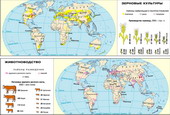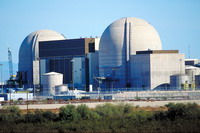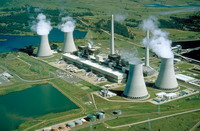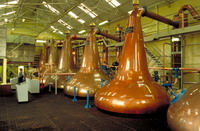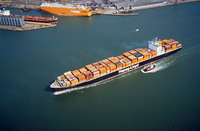Cereals are the most common of all the plants cultivated by man. Beneath them employ about half of the cultivated land (arable land). Appointment of a variety of crops. First of all, they are used as food staples for the people and as feed for livestock.
This chart presents the most common grains, which are called the bread of mankind: wheat (yields about 21% corn), rice (20%), corn (almost 23%).
wheat crops are concentrated mainly in the temperate and subtropical zones of the Northern Hemisphere, where sufficient heat and moisture. Grown winter wheat and spring wheat. Winter wheat has a higher yield than spring, because getting a lot of moisture in the spring from melting snow and has a longer growing season. However, in the cold snow-free winter it often freezes, causing the need for reseeding in the spring of spring varieties. The biggest producers of wheat are shown in the map. The main grain exporters in the world market are USA, Canada, France, Argentina, Australia, South Africa. Of wheat produce high quality flours, cereals, pasta and confectionery, starch, alcohol.
Rice is the main food crop for almost half of humanity. It is the culture of tropical and subtropical zones with long and warm summers. It is grown mainly on irrigated (flooded) lands in Asia, Latin America and Africa. In most countries get two crops a year, so at a much smaller area than that of wheat, rice, collected almost the same amount. Asian countries make 9 / 10 world rice production. The largest producers of rice are China, India, Indonesia, Vietnam, Bangladesh, Japan, Thailand.
corn (maize) has traditionally been high on the grain balance in the western hemisphere, which is its birthplace. Significant spread of culture has also acquired in southern Europe, China and South Africa. Produced from corn flour, cereals, starch, oil, glucose and alcohol. It is widely used as a fodder crop (grain and green mass). Around half of the cultivation and export of corn falls on the United States. Quite a lot of corn grown in Argentina, Brazil, Mexico and China.

Livestock - a branch of agriculture, which provides the population with food, supplies a diverse raw materials for light industry and food industry, live draft power, etc. The industry is closely linked with crop production, so the right combination - the basis of successful development of agricultural production in general.
In livestock there are two ways of development: intensive and extensive. Under intensive development path gain of livestock production is obtained by increasing the productivity of animals (breeding). If you stall or pasture stabling of animals and a balanced high quality food resources (mainly concentrated feed). Such livestock in developed countries, where for a small herd get the maximum number of high quality products. This applies particularly to Denmark, the Netherlands, Switzerland, Germany, USA, Australia, New Zealand. Nearly half the world's meat and milk production account for the highly developed countries.
Predominantly extensive nature has livestock in developing countries, where the increase in livestock production is achieved through the growth of livestock. With such a low potential housekeeping prevails transhumant grazing systems, livestock.
main components of livestock are: cattle, pigs, sheep, poultry, camel, horse, reindeer husbandry. The map contains information on leading livestock industries, information on other branches partially represented on the map "Agriculture".
Cattle rearing consists of cows, buffaloes, yaks. Depending on the structure of the herd, forage, livestock production of the original may have a dairy, meat, dairy and meat or meat and dairy. The most productive dairy cattle are bred in Europe and North America. Export of dairy products are the leaders of Denmark, Switzerland, the Netherlands, and New Zealand and Australia. Meat trend prevails in areas with dry climate and large areas of pasture. The world's largest area of beef cattle are the South American steppes - pampas. Argentina calls the Butcher shop the world for its leading role in the export of beef. The largest herd of cattle is India, but about 60% of cows, there will not be used, and the rest is used mainly as draft animals. This is due to persistent religious traditions, which advocates a vegetarian way of eating, and cow considered sacred alivetnym.

Pig developed, mostly in densely populated areas of the world, as well as areas of grain and potatoes - the basis of forage industry. Half of the pigs falls on Asian countries (except Muslim, where the consumption of pork is forbidden religion). Among the countries of the world's leader in number of farmed pigs is China. A large number of pigs are also grown in the U.S. and Russia.
Sheep distributed almost universally based on natural pastures in the arid (dry, semi-deserts) and mountainous areas. Depending on the raw materials that we get from animals, sheep secrete these areas: fine-wool and semi, karakulnoe, myasosalnoe, sheepskin-skin coat, meat, wool and milk. Wool-exporting countries: Australia, New Zealand, South Africa, Argentina, Uruguay.
 English
English


